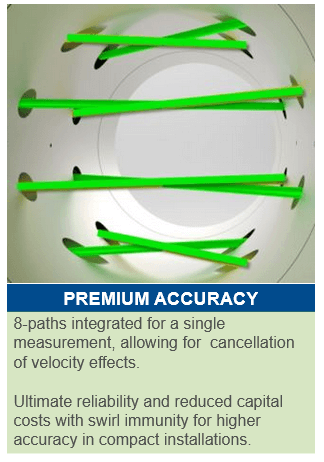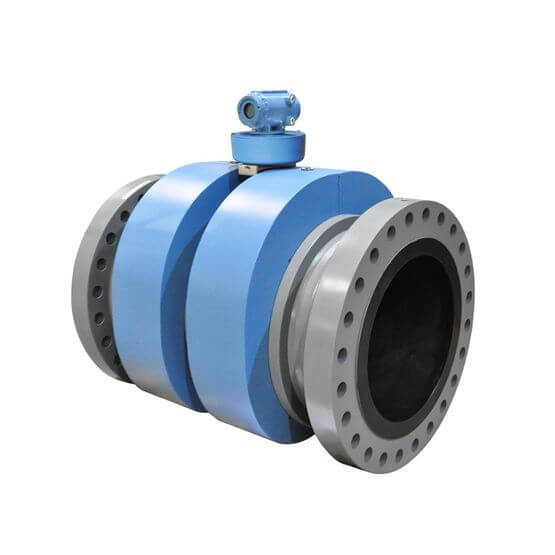There are many alternative technologies when it comes to measuring flow. At the Emerson Exchange Americas Virtual Series, Emerson’s Martin Schlebach describes applications where ultrasonic flow measurement is the best choice. Here’s his presentation abstract:
The 3418 8-path gas ultrasonic meters offer premium accuracy in the simplest installations. Rigorous compliance testing has proven that the 3418 is the only meter to pass all of the severest disturbance testing with no exception, with just 5 diameters of pipe upstream and no flow conditioner. These features allow for the overall reduction in meter assembly size and eliminate the pressure drop and potential blockage point associated with flow conditioner.
Martin opened with the history ultrasonic technology use in gas flow measurements. The initial promise was no major upstream piping or flow conditioners, unlimited turndown, no maintenance, and no pressure drop across the meter. The reality was flow conditioners were required which introduced blockage and pressure drops. Minimal maintenance was also required.
The initial applications for offshore oil & gas production platforms with widely varying flow rates. With the development of the Rosemount 3418 ultrasonic gas meter now meets most of the initial promises except for the unlimited turndown which is not achievable due to limitations in the physics.
AGA 9 2007 has added installations with no flow conditioner required and reduced upstream piping. Also, with the development of sealed ultrasonic sensors.
 Martin described OIML meter disturbance testing which allows that 1/3 of the allowable uncertainty of flow can come from installation effects. Each meter must be subjected to all these flow disturbances both mild and severe to qualify for the certificate. All perturbations meet OIML accuracy Class 0.5 which is well within AGA 9 limits for accuracy.
Martin described OIML meter disturbance testing which allows that 1/3 of the allowable uncertainty of flow can come from installation effects. Each meter must be subjected to all these flow disturbances both mild and severe to qualify for the certificate. All perturbations meet OIML accuracy Class 0.5 which is well within AGA 9 limits for accuracy.
The recommendation is 5 pipe diameters (5D) upstream or 3D with a flow conditioner upstream. This reduces installation costs in piping, enclosures and other items compared with other flow measurement solutions. From an operating standpoint, improved accuracy improves custody transfer revenues and maintenance costs are reduced. Based on a 12″ meter size, these costs are estimated at $195K for offshore installations and $220K for onshore installations.
Martin shared some use cases for these meters including a compressor station’s compressor discharge flow measurement without requiring flow conditioning and accurately handling the pulsating flow turbulence.
Another application was an inlet to a liquefied natural gas (LNG) plant. Eight gas ultrasonic meters were used on 12″, 30″ and 42″ gas pipelines. This LNG plant required greater accuracy. The solution required no piping upgrades and reduced overall uncertainty from 5% to less than 1% to pay for the meters in less than 6 months.
The last application he shared was on an offshore LNG inlet project with 14″, 12″ and 4″ high pressure gas injection pipes. The original plan was to use DP meters across orifice, but this solution required a lower footprint and better accuracy for a savings of $750K in installation costs.


